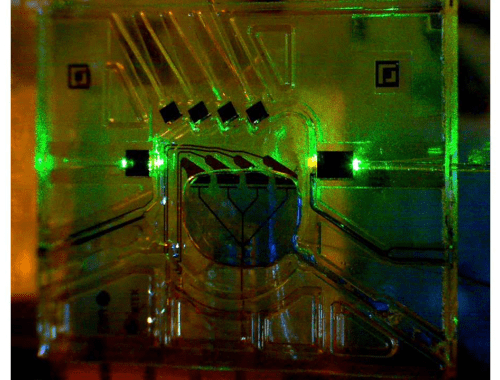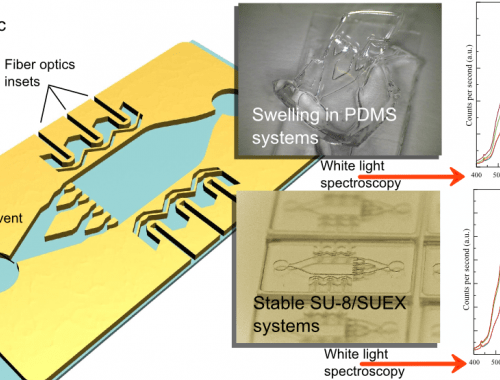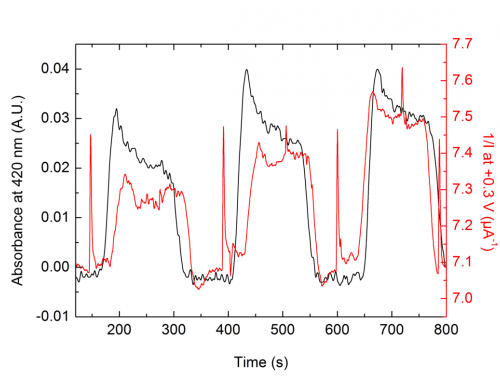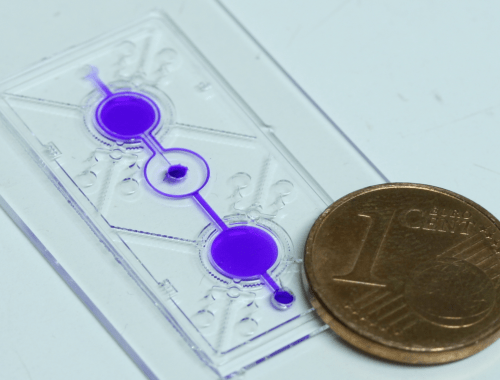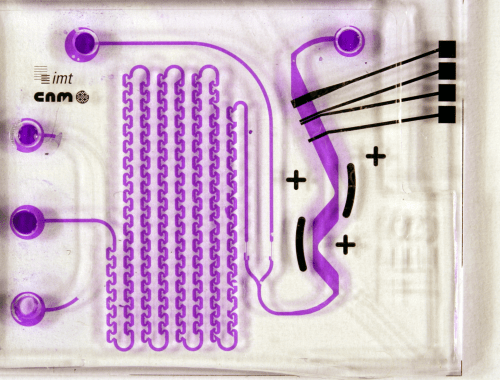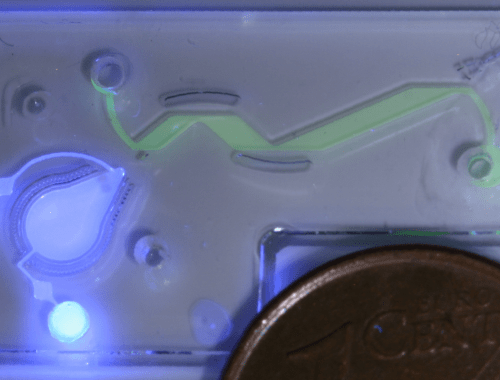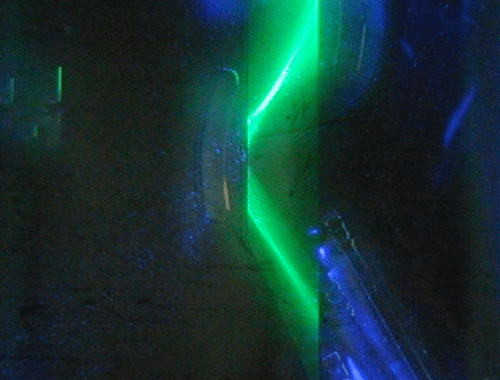Integrated Optics Laboratory
The next generation of biophotonic systems should be multiparametric, biocompatible, small and, above all, to have an unprecedented level of sensitivity. Considering such requirements, it is clear that a multidisciplinary approach has to be considered. In this context, the integrated optics lab is devoted to the synergic combination of photonic integrated circuits (PICs) with microfluidics. In this multidisciplinary, highly creative research field called photonic-lab-on-a-chip (PhLoC, also optofluidics) fluids play an active, key role in handling the flow of light in the microsystem: once fabricated, a solid-state PIC cannot be easily tuned or reconfigured. Conversely, when using liquids to engineer PICs, their optical properties can be real time, in situ, modulated by simply replacing the liquid. Other advantages are the atom-sized roughness between two immiscible fluids with different RI.
Main activities:
- Photonic characterization (insertion losses, attenuation, spectral response, modal profile)
- Development of associated microfluidics
- Optofluidic characterization (calibration curves, dynamic response, sensitivity, limit of detection, reversibility)
- Development of advanced polymer and semiconductor-based PhLoC
- Surface functionalization
Equipment:
- Several coherent and incoherent light sources, with wavelengths ranging from 310 nm to 2000 nm
- Triaxial piezoelectric micropositioners with 1 nm resolution
- CCD cameras working in the visible and in the NIR
- Two Newport power meters with pW resolution
- Several Nemesys syringe pumps)
- Several Ocean Optics spectrometers, covering the visible and the IR (up to 2500 nm)
- Associated electronic equipment (power sources, oscilloscope)
- Gaussmeter
- Monochromator
- A large variety of optomechanical and optics equipment





